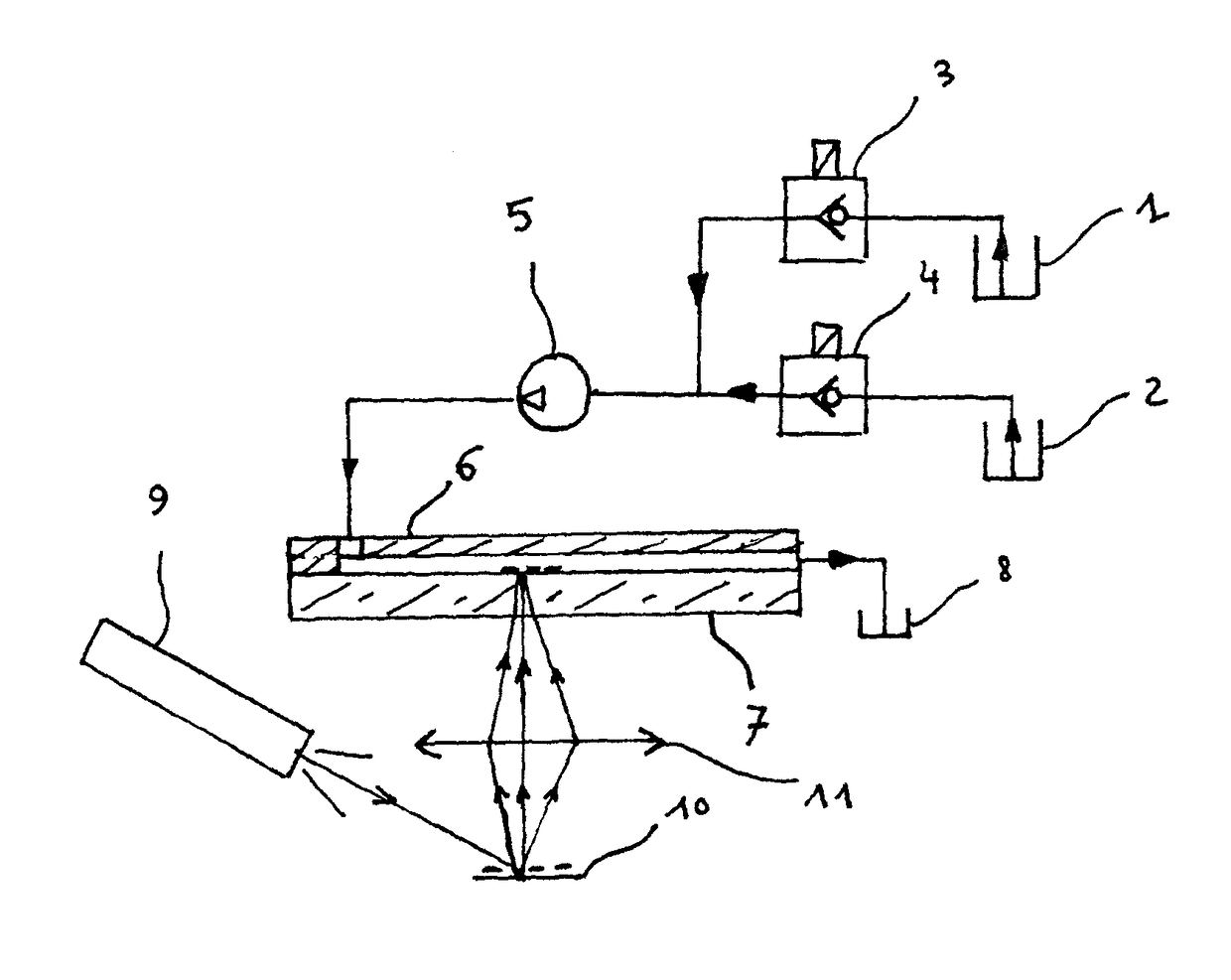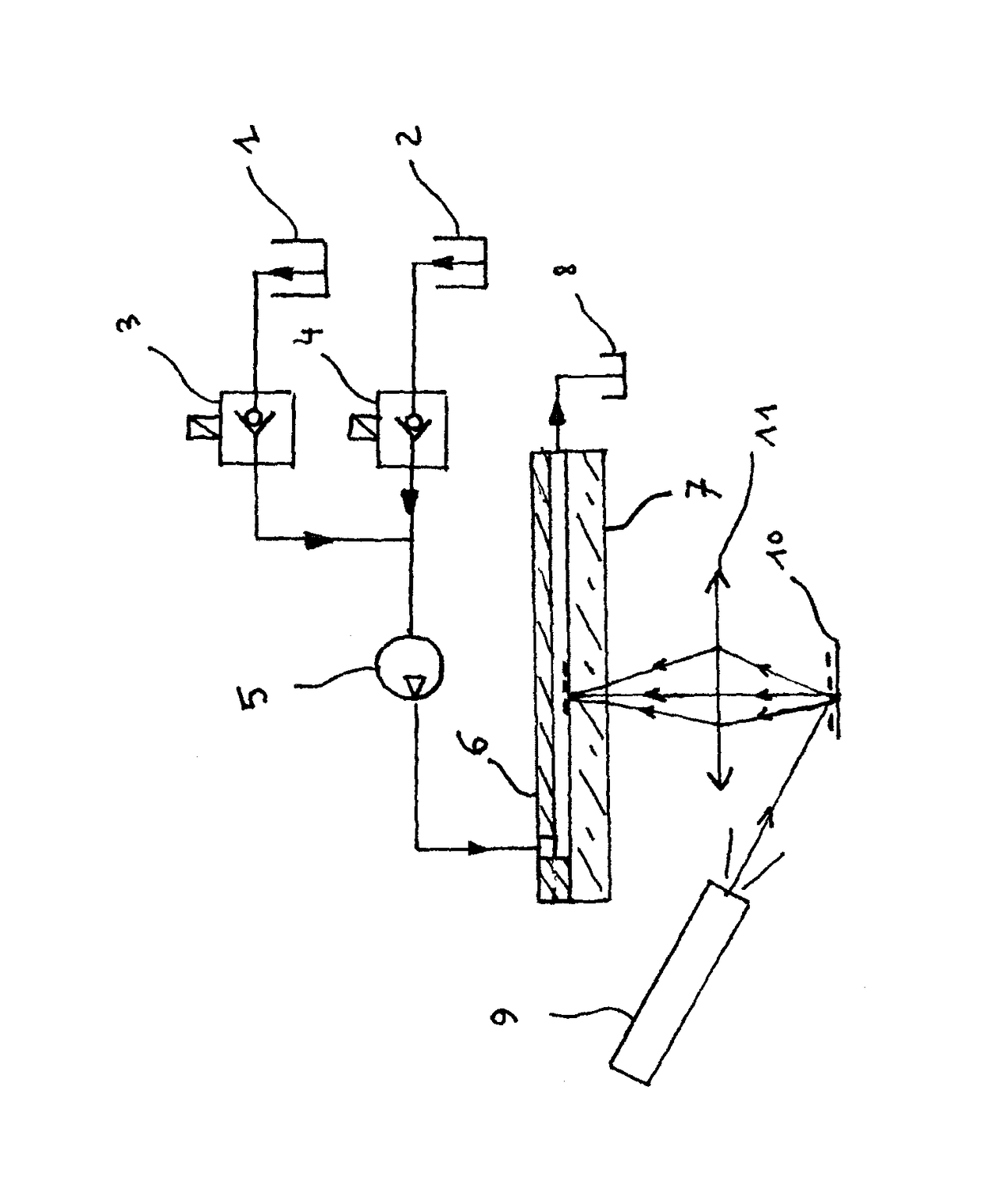Device for the microstructured grafting of proteins onto a substrate
a technology of protein grafting and microstructure, which is applied in the field of grafting of proteins onto substrates, can solve the problems of preventing industrial application, affecting the quality of grafting,
- Summary
- Abstract
- Description
- Claims
- Application Information
AI Technical Summary
Benefits of technology
Problems solved by technology
Method used
Image
Examples
Embodiment Construction
[0041]In a first embodiment of the invention, a first protein is contained in a first container (1) and a second protein is contained in a second container (2).
[0042]The first protein is green fibrinogen, known under the name Fibrinogen-Alexa Fluor 488, and the second protein is red fibrinogen, known under the name Fibrinogen Alexa Fluor 546. It is also possible to choose fibronectin for one of the two proteins or for both, as a replacement for said fibrinogens. The following proteins: fibrinogen, fibronectin, laminin, collagen and vitronectin can also be used with the invention. Fluorescent proteins, such as, in particular, green fibrinogen and red fibrinogen, are advantageous for the invention, for the purposes of visualizing the printing produced on the substrate.
[0043]The first protein is diluted in a first fluid or first solution which is aqueous or buffered, contained in the first container, the first solution also comprising water and a first grafting means which is a benzoph...
PUM
| Property | Measurement | Unit |
|---|---|---|
| ultraviolet wavelength | aaaaa | aaaaa |
| thickness | aaaaa | aaaaa |
| thickness | aaaaa | aaaaa |
Abstract
Description
Claims
Application Information
 Login to View More
Login to View More - R&D
- Intellectual Property
- Life Sciences
- Materials
- Tech Scout
- Unparalleled Data Quality
- Higher Quality Content
- 60% Fewer Hallucinations
Browse by: Latest US Patents, China's latest patents, Technical Efficacy Thesaurus, Application Domain, Technology Topic, Popular Technical Reports.
© 2025 PatSnap. All rights reserved.Legal|Privacy policy|Modern Slavery Act Transparency Statement|Sitemap|About US| Contact US: help@patsnap.com


